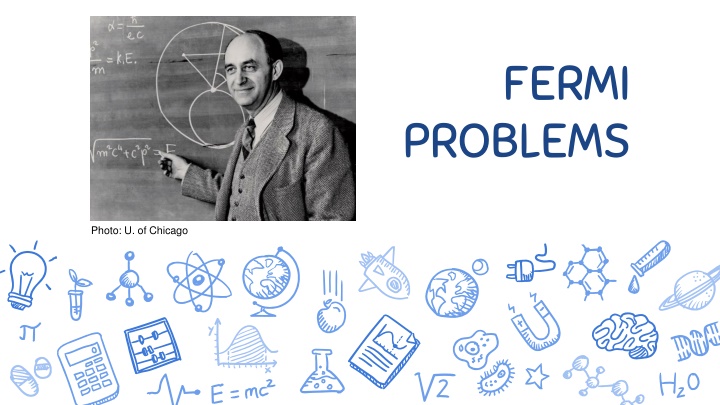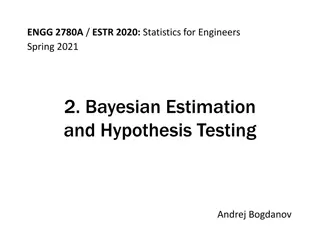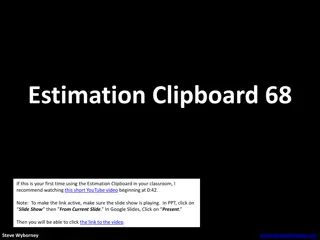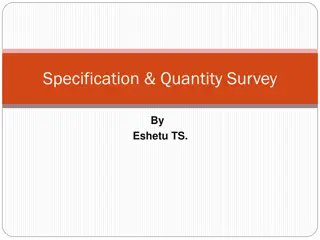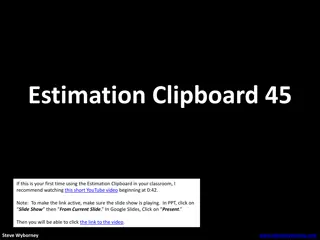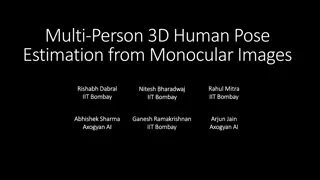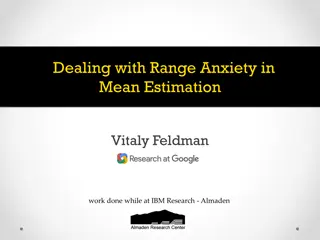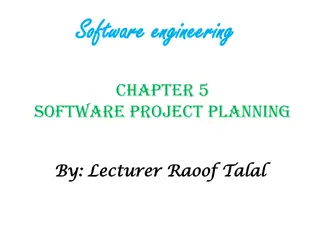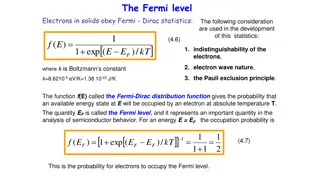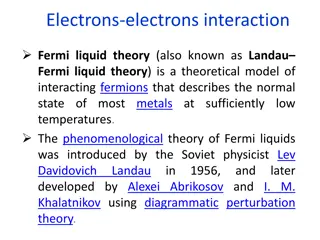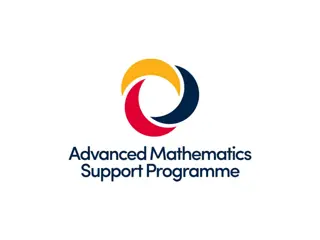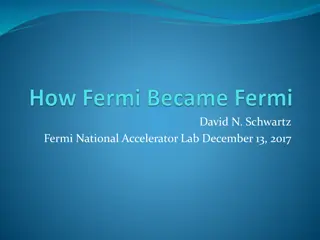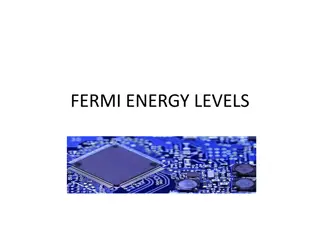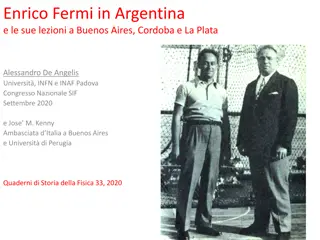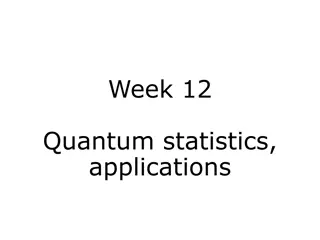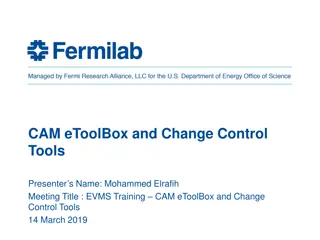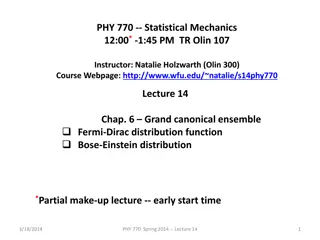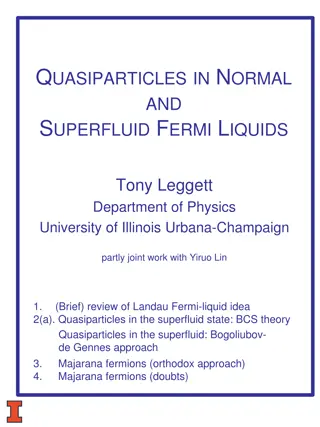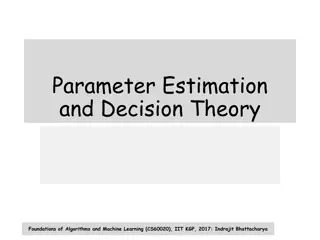Fermi Problems and Estimation Techniques in Science
Understand Enrico Fermi's approach to problem-solving through estimation in science as demonstrated by Fermi Problems. These problems involve making educated guesses to reach approximate answers, fostering creativity, critical thinking, and estimation skills. Explore the application of Fermi Problems in the classroom setting to engage students in tackling complex questions and reinforcing their estimation abilities.
Download Presentation

Please find below an Image/Link to download the presentation.
The content on the website is provided AS IS for your information and personal use only. It may not be sold, licensed, or shared on other websites without obtaining consent from the author.If you encounter any issues during the download, it is possible that the publisher has removed the file from their server.
You are allowed to download the files provided on this website for personal or commercial use, subject to the condition that they are used lawfully. All files are the property of their respective owners.
The content on the website is provided AS IS for your information and personal use only. It may not be sold, licensed, or shared on other websites without obtaining consent from the author.
E N D
Presentation Transcript
FERMI PROBLEMS Photo: U. of Chicago
Enrico Fermi Won the 1938 Nobel Prize for his work on radioactivity Led the team that created the first nuclear reactor Proposed the existence of the neutrino Did very important work in particle physics, especially pions, muons and cosmic rays Associate Director of the Manhattan Project OAPT 2018 - G. Macdonald 2
Fermi Problems are Estimation Problems Fermi was an excellent theoretical and experimental scientist and so he was extremely good at figuring out problems in his head, using reasonable assumptions to arrive at an approximate answer. OAPT 2018- G. Macdonald 3
We Dont Need Exact Solutions The idea is to make educated guesses at each stage of the problem, to reach an approximate result How many question marks should we have in a stock photo? 1? 7? 50? OAPT 2018 - G. Macdonald 4
Within An Order of Magnitude? Good Enough! Courtesy of XKCD: Paint the Earth https://what-if.xkcd.com/84/ OAPT 2018 - G. Macdonald 5
Why Would You Use Them in the Classroom?
Several Reasons! Allows students to take on impossible problems and succeed Can use the method to pre-check the answer for other question types Practices/reinforces estimation skills Can feel less constrained than problems where an exact answer is required Draws on students prior knowledge OAPT 2018 - G. Macdonald 7
QUESTION 1: The Ontario government decides that winter is too depressing and that what is really needed is to turn all of Lake Ontario into one giant mug of hot chocolate. a) Find the number of packets of hot chocolate powder required to make this much hot chocolate. b) Find the number of large marshmallows required to float on top of the hot chocolate. DATA: Lake Ontario is 245 km by 85 km wide, and holds 1610 cubic kilometres of water One packet of hot chocolate makes 175mL 1 mL = 1 cubic centimetre A large marshmallow is about 3cm in diameter 9 OAPT 2018 - G. Macdonald
What Type of Answer Are We Looking For? Order of magnitude-ish? Exact? 175mL is about 200cm3 = 2 x 102cm3 volume of Lake Ontario = 1610 km3= 1.61 x 1012m3= 1.61 x 1015L 1 hot chocolate= 175mL = 0.175 L 1610 km3is about 2000 x 1012m3 = 2 x 1018cm3 2 x 1018cm3/ 2 x 102cm3 = 2 x 1016packages So 1.61 x 1015L / 0.175 L = 9.2 x 1015packages OAPT 2018 - G. Macdonald 10
What Type of Answer Are We Looking For? Exact-ish because marshmallows? Assuming the marshmallows don t melt, and are stacked long-axis down Area of a marshmallow = 7 x 10-4m2 area of Lake Ontario = 245km x 85km =20825 km2 = 20825 (1 x 106m2 )= 2.1 x 1010m2 So 2.1 x 1010m2/ 7x 10-4m2= 3 x 1013 marshmallows OAPT 2018 - G. Macdonald 11
But was the question even a good Fermi Problem? ? Were there lots of ways to approach the problem? A few .but not really ? Did it require prior knowledge that a student could be reasonably expected to have? Yes metric volume conversions ? Did it generate a lot of discussion for the group? Possibly? Hopefully? OAPT 2018 - G. Macdonald 12
What are we looking for in a good Fermi Problem?
My Own List: Process is more important than the product Talking through the answer with others is important Students need to have enough prior knowledge to make a reasonable assumption at each step Communication of what assumptions/steps were made is essential OAPT 2018 - G. Macdonald 14
And Now EVALUATION 15 OAPT 2018 - G. Macdonald
Assuming We Are Assigning a Grade/Mark Here How Are We Doing It? Here are some ideas: 1. Binary marking: 1 mark for the correct answer, 0 for a wrong answer. 2. Top marks for the fastest answer regardless of accuracy 3. Top marks for the student who brought you coffee ideas These are terrible OAPT 2018 - G. Macdonald 16
One idea: Assign a mark but give a range Suppose that the question is "What is the mass of Lake Erie", and that the judges' best estimate is 10^15 kg An Answer within a factor of i.e.: an answer in the range: Marks 5 2 X 10^14 - 5 X 10^15 5 10 4 X 10^13 - 2 X 10^16 3 100 8 X 10^12 - 1 X 10^17 1 http://www.physics.uwo.ca/science_olympics/events/puzzles/fermi_questions.html OAPT 2018 - G. Macdonald 17
One idea: Assign a mark but give a range (2) You could also ask for a three-part answer: give the minimum possible value, the best estimate, and the maximum possible value in your answer. Each answer receives a mark based on how accurate it is. http://www.physics.uwo.ca/science_olympics/events/puzzles/fermi_questions.html OAPT 2018 - G. Macdonald 18
Some Ideas? o Rubric with categories for detailing assumptions made, good estimating, etc o Base mark for a good effort answer, even if result isn t very accurate (say 3/5 for example) o Marks for working with other group members and contributing to discussion of final answer OAPT 2018 - G. Macdonald 19
Some Hazards o How to mark individual effort in a group setting o If the process is important, how to make the mark scheme reflect that (instead of all product marking) o How much is having a good base of prior knowledge worth? More than process? OAPT 2018 - G. Macdonald 20
Some Further Hazards o What *is* the right answer? Might rely on teacher s abilities of estimation! OAPT 2018 - G. Macdonald 21
Some Opportunities o Internet provides lots of facts n figures if needed for filling in gaps in prior knowledge o Could do them with any grade level, if difficulty is adjusted: for example, Grade 9 Astronomy deals with many order of magnitude issues OAPT 2018 - G. Macdonald 22
Some Opportunities o Could do them with other *subject areas*, especially math: Grade 9 curriculum has a large section of exponents and powers of ten which this fits nicely OAPT 2018 - G. Macdonald 23
